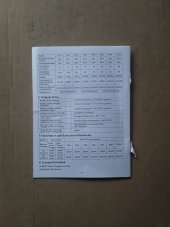Collectively my system, when constructed, will have 4 - 275w panels, a 100a MPPT SCC, 24v 3000k inverter. Having considered series/parallel connections for both batteries and panels I'm having a hard time understanding what size fuses and breakers would be most closely advantageous to the parameters my input and output power can supply.
My b-bank is 8 - 6v/225amh lead acid, and my panels are rated: Vmp - 32.1/ Voc-39v, Imp ~ 8.5 amps/ Isc ~ 9.20 amps.
My charge controller is: max 2400v PV input Voc ~ 96 / Vmp ~ 72.
I've got my 24v b-bank wired up and fully charged. I'm 3/4 finished panel frame/construction and now designing a mounting board for components,
connections and (my present delima) fuses/breakers.
At present, because this is like Greek I am hesitant but in time will all become clear as day.
Any help would be most appreciated and a thank you in advance is sincerely put forth.
My b-bank is 8 - 6v/225amh lead acid, and my panels are rated: Vmp - 32.1/ Voc-39v, Imp ~ 8.5 amps/ Isc ~ 9.20 amps.
My charge controller is: max 2400v PV input Voc ~ 96 / Vmp ~ 72.
I've got my 24v b-bank wired up and fully charged. I'm 3/4 finished panel frame/construction and now designing a mounting board for components,
connections and (my present delima) fuses/breakers.
At present, because this is like Greek I am hesitant but in time will all become clear as day.
Any help would be most appreciated and a thank you in advance is sincerely put forth.



